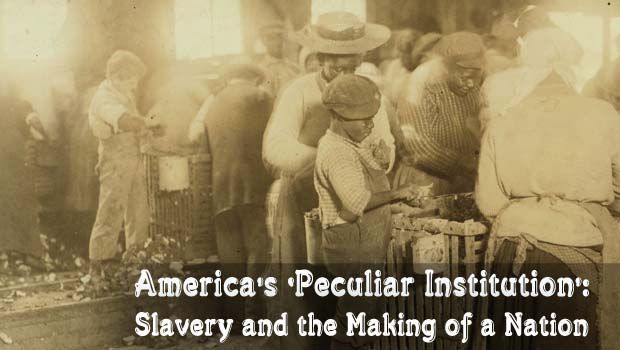The 2009 edition of The State of Our Unions makes clear that money matters for marriage. Income, employment, debt, assets, and the division of household labor all shape the quality and stability of married life in the United States. In other words, earning, spending, saving, and sharing money are integral dimensions of contemporary married life.
This basic sociological truth has largely been obscured in the last three decades. As Alex Roberts of Institute for American Values points out Americans have increasingly come to view marriage primarily as a soul mate relationship. Emotional intimacy, sexual satisfaction, and individual happiness rank at the top of marital aspirations, especially for younger adults. The 2001 edition of The State of Our Unions found, for instance, that over 80 percent of young women believed that it was more important to have a husband who can communicate his deepest feelings than bring home the bacon.
But the Great Recession changes all that. Since the downturn began in December of 2007, millions of Americans have adopted a home-grown bailout strategy. They are relying upon their own marriages and families to weather this economic storm. The recession reminds us that marriage is more than an emotional relationship; marriage is also an economic partnership and social safety net. There is nothing like the loss of a job, an imminent foreclosure, or a shrinking 401(k) to gain new appreciation for a wife’s job, a husband’s commitment to pay down debt, or the in-laws’ willingness to help out with childcare or a rent-free place to live.
This is not to deny that the Great Recession has strained marriages. Job losses, foreclosures, household debt, bill collectors’ incessant calls and dramatic declines in retirement savings can and have taken a heavy toll on many couples over the last two years. In the face of these pressures, some spouses have succumbed to heavy drinking, depression, and a withdrawal from family life; for some couples, the downturn has fueled marital tension, recriminations, and conflict, spiraling downwards in some cases to divorce.
But, divorce rates in the country actually fell from 17.5 per 1,000 married women in 2007 to 16.9 per 1,000 married women in 2008 (after rising from 16.4 per 1,000 married women in 2005). This divorce decline suggests that most married couples have not responded to the economic crisis of the moment by heading for divorce court; instead, judging by divorce trends, many couples appear to be developing a new appreciation for the economic and social support that marriage can provide in tough times. Thus, one piece of good news emerging from the last two years is that marital stability is up.
Another piece of good news for marriage is that our collective credit card binge seems to be coming to an end. After accumulating a record $988 billion in revolving debt in 2008, Americans shed about $90 billion in revolving debt this past year, according to the Federal Reserve Board.
The renewal of thrift in America is important because, as Jeffrey Dew points out in his article, Bank on It, credit card debt is corrosive in marriage, whereas shared financial assets sweeten the ties that bind couples together. For instance, Dew’s research indicates that couples with no assets were about 70 percent more likely to divorce over a three-year period compared to couples with assets of $10,000. Dew also finds that high levels of credit card debt play havoc in the lives of newly married couples, as debt is associated with less time spent together, more fighting, and significantly lower levels of marital happiness among these couples. Thus, the recent uptick in thrift promises to pay valuable dividends in the quality and stability of married life in the U.S.
The Great Recession also seems to be reviving the home economy, as media reports suggest that more Americans are growing their own food, making and mending their own clothes, and eating in more often. For instance, the National Restaurant Association reports that inflation-adjusted restaurant sales fell in 2008 for the first time in about 40 years; the association predicts further declines for 2009. This turn towards household production is likely to reinforce a sense of solidarity not only between spouses, but also between parents and children, judging by a long tradition of research on the effects of home produced goods on family life.
In these ways, by fostering a spirit of economic cooperation, family solidarity, and thrift that redounds to the benefit of marriage, the Great Recession appears to offer a silver lining for marriage. But in one other important respect the long-term consequences of the Great Recession could be profoundly negative for marriage, especially among the poor and the working class. As Christine Whelan, visiting assistant professor of sociology at the University of Iowa, notes recession-related unemployment trends have hit men particularly hard, with more than 75 percent of job losses concentrated among men. Whelan is hopeful that these unemployment trends will foster more gender egalitarianism and ultimately marital comity on the home front, as unemployed or underemployed men take up more childcare and housework.
But another possibility is that recent increases in men’s unemployment will foster discord on the home front. My own research indicates that husbands are significantly less happy in their marriages, and more likely to contemplate divorce, when their wives take the lead in breadwinning. On average, men do not have difficulties with working wives, so long as their wives work about the same amount of time or less than they do. But, according to my analysis of the 2000 Survey of Marriage and Family Life, husbands do not like it when they are clearly displaced as the primary breadwinner in their families. For instance, husbands in families with children at home are 61 percent less likely to report that they are “very happy” in their marriages when their wives work more hours than they do.
What is particularly worrisome about recent unemployment trends is that joblessness has been concentrated among working class and poor men. In September of 2009, the Bureau of Labor Statistics found that 4.9 percent of college-educated women and 5.0 percent of college-educated men were unemployed. By contrast, among those with just a high school degree, 8.6 percent of women and 11.1 percent of men were unemployed. These trends suggest that lower-income couples face not only higher rates of joblessness but also higher rates of families headed by female breadwinners.
Judging by my research, high rates of joblessness among working class and poor men are likely to harm the quality and stability of married life among lower-income couples over the long term, as lower-income men’s economic contributions to their families become more marginal. Indeed, these unemployment trends are likely to deepen the marital divide that has opened up between college-educated and less-educated Americans, a divide marked by dramatically higher rates of divorce among those without college degrees compared to those with college degrees.
Thus, when it comes to the different impact of recent joblessness on working class men, the deep economic downturn of the last two years seems likely to pose a threat to the long-term health of working class marriage.
Only time will tell if the cumulative economic consequences of this recession redound to the benefit of marriage or to the detriment of marriage, especially among less advantaged Americans. But what is not in doubt is that the Great Recession has once again brought into clear relief the enduring truth that marriage and money, the nest and the nest-egg, go hand in hand.






